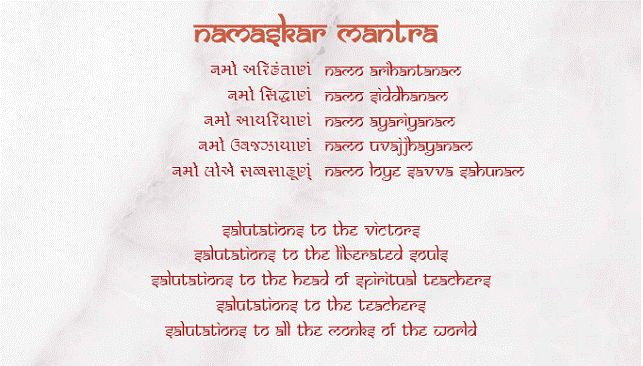
The Namaskar mantra is an eternal verse in which the five parmesthi are worshipped. Param means supreme and Isht means valued. Why are these five parmeshti supreme? Just as a mother who shows her child the right path, and how to become happy, similarly, remembering the five parmesthi saves us from sins and allows us to achieve purity. All Jains recite the namaskar mantra 108 times because "grah dware kratam paapam - devesh smarane vinashyati". We do 108 sins in our daily household life. The calculation is as follows: 4 types of kashay (passions) - (krodh (anger), maan (pride), maya (deceit), lobh (greed)) x 3 media being man (thought), vachan (speech), kay (physical) x 3 types of acts i.e. karvu (doing by oneself), karavu (getting others to do it), anumodvu (supporting others who are doing it) x 3 stages of sarambh (intention), samarambh (preparation), aarambh (commission) (ref: Tattvarth Sutra: Ashrav chapter). Thus we go to the temple and remember the five parmeshti 108 times to wash away the 108 permutations of our sins.
The symbol 'OM' encompasses the five parmeshti. It represents AAAUM - A is for arihant bhagwan, A is for ashiriri siddh, Aa for acharya dev, U for upadhyay and M is for all munis. Collecting all five letters together makes the phonetic sound of OM. Kund Kund Acharyadev in his Niyamsara gatha no. 71 to 75 has described the five parmeshti as shown in the next page.



